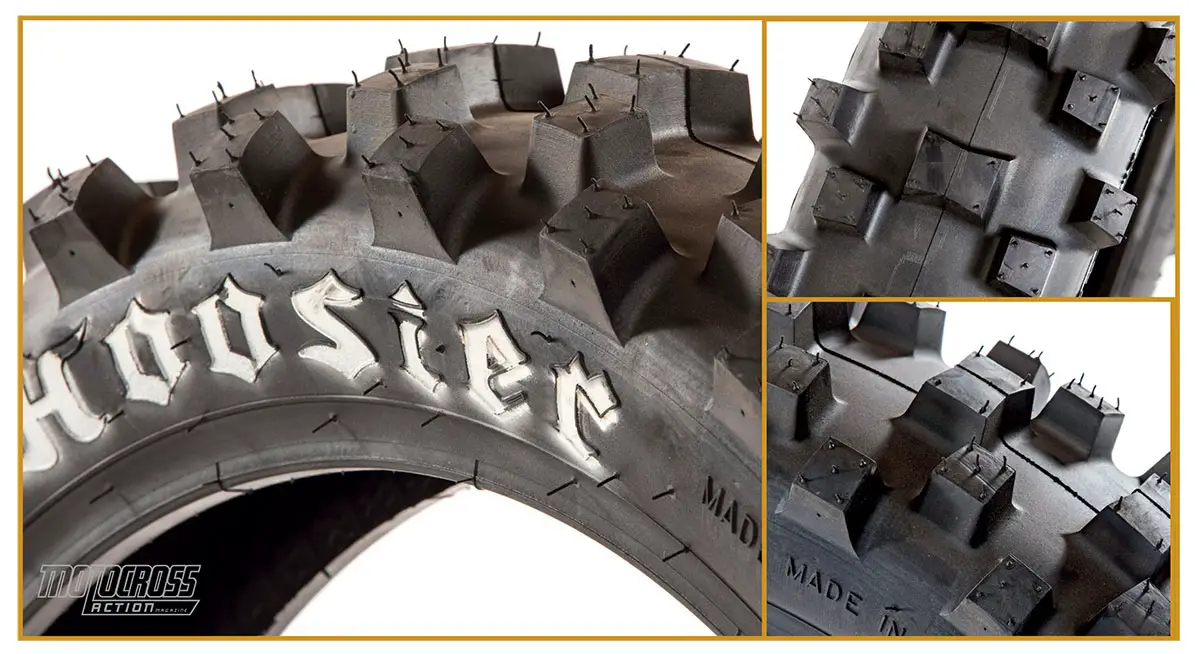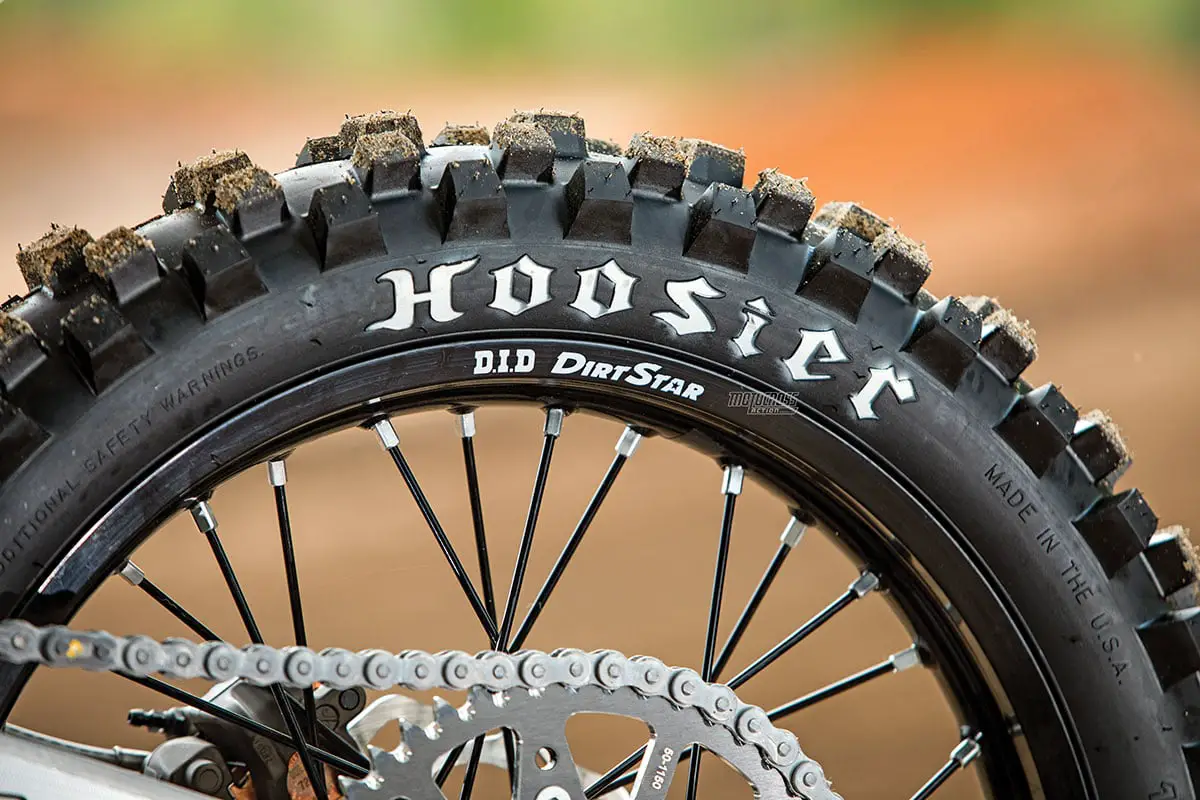MXA TEAM TESTED: HOOSIER IMX20 REAR TIRE
WHAT IS IT? Hoosier is a long-time American dirt and asphalt track car tire company. In late 2016, Continental tires bought Hoosier for $140,000,000. Hoosier Racing Tires specializes in racing tires for asphalt, dirt, karts, drag racing, ATVs and now motocross. The company’s slogan is “Tires designed for champions,” and the company has backed that up in many racing disciplines. Hoosier came into the motocross market looking to make the best possible racing tires. Hoosier offers three different compounds with the same tread pattern. We tested the IMX20 rear tire, which is the softest compound of the three.
WHAT’S IT COST? $125.00 (120/80-19).
CONTACT? www.hoosiertire.com or (574) 784-3152.
WHAT STANDS OUT? Here’s a list of things that stand out with the Hoosier 120/80-19 IMX20 racing tire.
(1) Mounting. The Hoosier rear tire had a noticeably light feel when we picked it up to mount it, even when compared to our track favorite Dunlop MX33. Hoosier told us not to exceed 40 psi to seat the bead. The tire was easy to change, and the bead broke fairly easily when filling with air. We mounted it with a heavy-duty STI tube. Hoosier recommends running 12 to 14 psi. We started in the middle at 13 psi.
(2) Performance. The Hoosier 120/80-19 IMX20 tire has a different feel initially, as it reacts differently in the bumps from the Dunlop, Bridgestone and Maxxis tires we are accustomed to. We noticed the comfort was quite high on acceleration bumps, since the tire hooked up and followed the ground well. The tire had a plush feeling in off-gas situations, too. The highlight of the Hoosier tire was its straight-line traction. As we went up and down on tire pressure, our confidence in straight-line traction did not change. The IMX20 tended to struggle at the end of the day on high-speed rough tracks, landing at speed or on the flats. It had more flex than we would like, as the carcass was on the softer side. It helped when we bumped the tire pressure up to 14 psi, but that did not solve the problem. And rightfully so. The flex of the softest Hoosier tire compound is a trade-off. It has exceptional traction for testers slow and fast and is great for loam, but it flexed too much for faster riders in rougher conditions and big bumps.
(3) Durability. We cracked the knobs at 7.5 hours, but no knobs came off of the tire. We pushed the tire to 10 hours in intermediate to soft terrain, and straight-line traction performance didn’t drop off. We did, however, lose some of the comfort under braking after the seven- to eight-hour mark. The MXA wrecking crew felt the IMX20 had good durability for Hoosier’s softest compound tire, but it isn’t a tire for a guy who is looking for longevity.
 (4) Options. Hoosier offers three different compounds: the IMX20, 25 and 30. The 20 is the softest race spec tire. The 25 is more for intermediate to hard terrain, and the 30 is more of a customer-based tire for riders who want to ride on multiple weekends without changing the tire. All of the Hoosier models weigh the same.
(4) Options. Hoosier offers three different compounds: the IMX20, 25 and 30. The 20 is the softest race spec tire. The 25 is more for intermediate to hard terrain, and the 30 is more of a customer-based tire for riders who want to ride on multiple weekends without changing the tire. All of the Hoosier models weigh the same.
(5) Weight. The IMX tire weighed 10.1 pounds, which is just under 2 pounds lighter than our favorite Dunlop MX33 rear tire. People spend thousands of dollars on titanium bolts to shave weight, but the greatest benefit comes from saving in areas of unsprung weight, like tires.
WHAT’S THE SQUAWK? The Hoosier IMX20 rear tire is made specifically for loam and soft dirt. It offers other superlatives, but its range is narrow in comparison to tires like the Dunlop MX33 and Bridgestone X40.






Comments are closed.